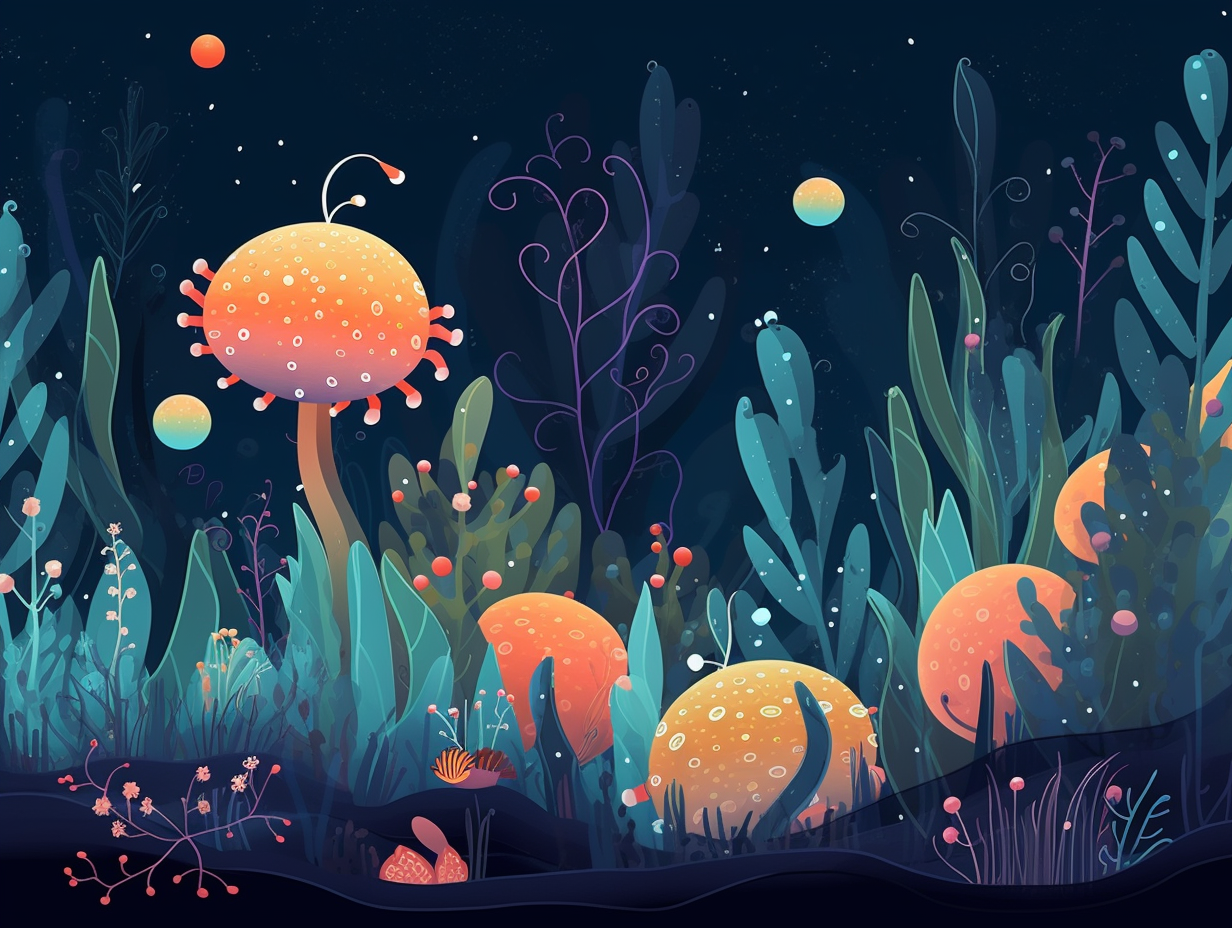Discover the Unseen World: Top 13 Fun Facts About the Cell Wall That Will Amaze You

1. Party Time in Plant Cell Walls
Get ready to be "walled" in by this fascinating fact: the cell wall of land plants is made of party-goers like cellulose, hemicelluloses, and pectin, mingling together and giving plants their unyielding and stoic demeanor.
Source => en.wikipedia.org
2. Plant Cell Wall Superheroes
Imagine the Incredible Hulk as a cell wall: tough, green, and constantly expanding! That's right, folks, even plant cells have their superheroes: The primary cell wall is made up of intertwining cellulose microfibrils and a network of pectic polysaccharides, allowing the cell to develop turgor pressure for rigidity and controlled expansion, all while being influenced by the arrangement of microtubules in the underlying cell cortex.
Source => ncbi.nlm.nih.gov

Did you know that cells are like tiny reality shows, with organelles working together in confined spaces to perform their individual tasks without interfering with each other? Discover how these mini-factories create unique environments for optimal function! 🏭🔬
=> Fun Facts about Organelles
3. Animals Miss out on Cell Wall Parties
Unlike exclusive clubs with stringent entrance requirements, cell wall parties are quite the rave for fungi, algae, and plants, while animal cells can't help but feel a little left out: Jokes aside, cell walls provide structure and protection for some eukaryotes and most prokaryotes, with the curious exception of animal cells relying solely on their cell membranes for support and defense.
Source => en.wikipedia.org
4. Customizing Cellular Fortresses
Who needs walls when you're an animal? Well, apparently plants, fungi, algae, and most prokaryotes do: These organism-types are the proud builders of cell walls, which serve as their own little fortress, protecting them from unwanted intruders and providing the necessary structural support. And just like humans customizing their home décor, the composition of these cell walls can vary depending on the species, cell type, and developmental stage, with a beautiful mix of materials like cellulose, hemicelluloses, pectin, glycoproteins, lignin, suberin, or cutin.
Source => en.wikipedia.org

5. Plant Kingdom's "Game of Thrones"
You've heard of secret tunnels and hidden passages in castles, but did you know that plant cells have their very own "Game of Thrones" style network of travel? Introducing Plasmodesmata, the underground tunnels of the plant kingdom: These microscopic channels criss-cross cell walls, allowing direct and regulated transport of substances between neighboring cells, and evolving independently across different lineages. With walls up to 90 nm thick, these nifty little passages are guarded by layers of plasma membrane, cytoplasmic sleeve, and desmotubule, and can shift their permeability through callose regulation, dilation, gating, or structural remodeling.
Source => en.wikipedia.org
6. Plant Cell Walls Rival Chateaus
While the humble plant cell wall may not quite have the je ne sais quoi of a French chateau's grand façade, the intriguing intricacy of its layers would certainly leave Louis XIV green with envy: This botanical marvel comprises primary and secondary walls, with the former being thin and elastic, and the latter, thicker and bursting with cellulose. Moreover, some plant cells flaunt a glamorous tertiary wall made of xylan, found exclusively in the wood of gymnosperms, providing both vital structural support and protection from life's harsh elements.
Source => toppr.com
7. Witty "Jack-of-all-trades" Expansins
Whoever said laughter is the best medicine never met an expansin: These witty proteins moonlight as microscopic "Jack-of-all-trades" for plants, helping them to grow, break out in sprouts, and ripen their fruit while also keeping it together under pressure. Not bad for a little wallflower! : Expansins are cell wall proteins that loosen the cell wall during plant growth and development, enabling cell expansion and overall plant growth. They play versatile roles in various plant growth stages from germination to fruit ripening, and can also be found in microbial organisms and creatures like snails.
Source => ncbi.nlm.nih.gov
8. Unsung Hero of Vegetable Kingdom
Like a fortress of fiber guarding a castle made of kale, the cell wall stands as the unsung hero of the vegetable kingdom while keeping things running smoothly: The cell wall's carbohydrate fibers, made up of cellulose, hemicellulose, pectin, and lignin, not only give plant cells their support and protection but also contribute to a plant's calorie count and serve as a valuable energy source for plant-munching animals.
Source => academic.oup.com
9. Tough Cell Wall Bouncers
Wood you believe it? Plants have built-in bouncers, and they're tougher than oak: The evolution of lignin in the cell wall of woody plants was a key adaptation for their survival on land, providing increased mechanical support, water transport, and defense against pathogens. Fungi and certain bacteria, however, have managed to sneak past this bouncer by developing complex enzymatic strategies to decompose the lignin, making the dance of lignin degradation a never-ending tango between their diverse methods.
Source => ncbi.nlm.nih.gov

10. Gram-Positive Bacteria's Web-Slingers
Step aside Spider-Man, the secret behind Gram-positive bacteria's "web" is no Marvel: Teichoic acids are long anionic polymers that thread through the layers of peptidoglycan in these bacteria, maintaining the cell wall's structural integrity and playing a role in host-pathogen interactions.
Source => ncbi.nlm.nih.gov
11. Plants, The Original Recycling Kings
You know that feeling when you spruce up your home with reused materials – like a recycling king or queen? Well, plants were doing that before it was cool: They can incorporate new wall polymers by recycling and salvaging the sugars from degraded cell wall components through transglycosylation or internalization to produce new precursors for wall synthesis, which contributes to plant growth and development.
Source => sciencedirect.com
12. Callose, The Indecisive Party-Goer
As auxin would have it, callose just can't decide if it wants in or out of the party: In plant cells, a β-1,3-glucan polymer called callose controls the permeability of plasmodesmata channels, thus maintaining auxin gradients essential for growth and development, thanks to the expression of the party police, GSL8/calS10, and the party crashers, PdBGs.
Source => ncbi.nlm.nih.gov
13. S-Layer, The Elusive Fashionista
If cell walls held dinner parties, the S-layer would be the hottest, most exclusive guest: a versatile fashionista with a wardrobe full of crystalline protein outfits, always reappearing in stunning new arrangements. But careful, they're also a bit of a diva—quick to vanish in the lab environment: The S-layer, found in bacteria and archaea, is a complex lattice structure of protein subunits, known for its ability to recrystallize into various patterns while consisting of neutral hexoses, pentoses, and other carbohydrate chains.
Source => ncbi.nlm.nih.gov
Related Fun Facts




















